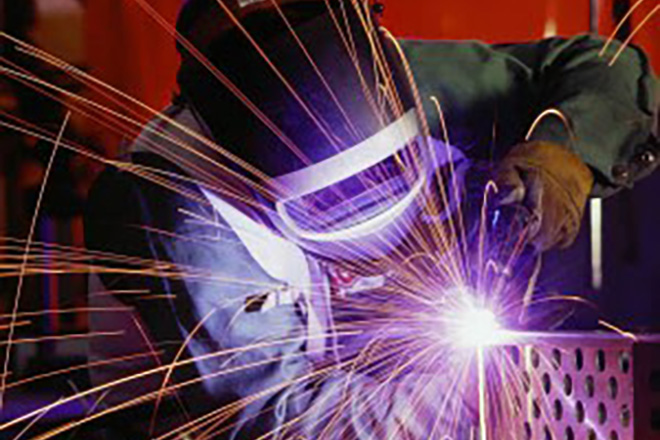Nine Rules for Successful Weld Repair of High Strength Steel

It’s inevitable. If you inspect your crane, aerial device, or other mobile lift equipment, you’re eventually going to find something that needs repair. When this day comes, it's important to fix it properly to avoid having to do it again – either in the following year or even immediately after the first repair attempt.
Most people are familiar with the requirements for welding mild steel and often apply the same welding procedures to other types of steels. For example, the average welder will likely assume that, if he’s welding steel, E7018 will be the best electrode for the application. However, for higher strength steels, this rod may not provide filler metal strong enough to sustain the required stress. If this is the case, it will re-crack in future service. Further, because the lower strength weld metal has mixed with the higher strength parent metal, the entire region has been weakened, compromising the possibility of properly repairing the area in the future, even if the right filler metal is used.
As the above example illustrates, when welding on high strength steel, it is important to ensure that the welding goes right the first time. If not, the steel will likely not be forgiving and re-repairs will be required. While this may be tolerable with regular mild steel, high strength steel will temper somewhat every time it is welded, weakening the metal around the joint.
There are various basic rules that can easily be followed to maximize the probability of achieving a sound weld. Here are a few tips:
- Obtain the proper weld procedure from the manufacturer or from an engineer competent in welded repair of high strength steel. Using the wrong procedure may result in recracking, degradation of the surrounding parent metal, reduced joint strength, brittleness in the joint, and/or a host of other problems.
- Employ a welder that is certified for the welding process and filler metal type in the required position. The welder should have experience welding on the grade of material and understand the characteristics of that material. Do not settle for a mechanic with a rudimentary welding background.
- Ensure that the electrodes are clean and in good condition. For steels having yield strengths in excess of 100 ksi (690 MPa), the electrodes must be baked in an oven at temperatures between 700–800℉ (370–425℃) for at least one hour before being used, even if just out of a new box. After baking, the electrodes should be kept in a storage oven at 250℉ (120℃) until required for use.
- Weld with small electrodes using stringer beads instead of using a weaving technique. This limits the heat input into the metal, which allows the steel to achieve its full strength after welding. A weaving technique could cause reduced weld strength as well as re-cracking after the weld cools.
- Clean the area of any grease, dirt, paint, oil, rust, or other foreign material at least two inches (50mm) on either side of the repair. Failure to do so will cause porosity and/or inclusions in the weld metal, weakening it and making it more susceptible to cracking.
- Completely remove the crack and check it with magnetic particle or liquid penetrant testing. It is not always easy to see the remaining crack in a gouged-out groove with the naked eye. Nor is it true that turning up the amperage will burn out the crack. With no root gap, welding penetration is very limited and often a portion of the crack will remain below the surface if this technique is used. The remaining crack will again propagate through the material, likely requiring another repair after the next inspection.
- Pay attention to the preheat and post-heat requirements. The material should be evenly heated to the preheat temperature through its thickness for three inches (75mm) to either side of the repair. Note that preheating to an excessively high temperature can temper the steel, reducing its strength. The temperature should be monitored using temperature-indicating crayons, ideally on the back side of the joint, three inches away.
- Do not weld in a drafty location, particularly when the ambient temperature is low, such as during the winter. These drafts have the effect of quenching the weld metal too quickly, resulting in re-cracking either immediately after welding or up to two days later.
- Examine the final weld using magnetic particle inspection; however, delay this inspection for as long as possible. Preferably, the delay period should be at least 48 hours after welding. This is because hydrogen cracking occurs once the weld has cooled and can occur up to 48 hours after welding. The delay period ensures that any hydrogen cracks will be found.
For critical repairs, it can pay off to have a visual weld inspector present to ensure that the parameters of the repair procedure are being followed correctly. In some cases, the inspector is only required at the beginning of the job to give the welder some up-front guidance.
Note that many of these steps should also be followed when welding lower strength steels. If any uncertainty exists, talk to the manufacturer or to an engineer.
NEED A QUOTE?
Simply fill out your name, number, and email below and someone from our team will contact you within 24 hours.




